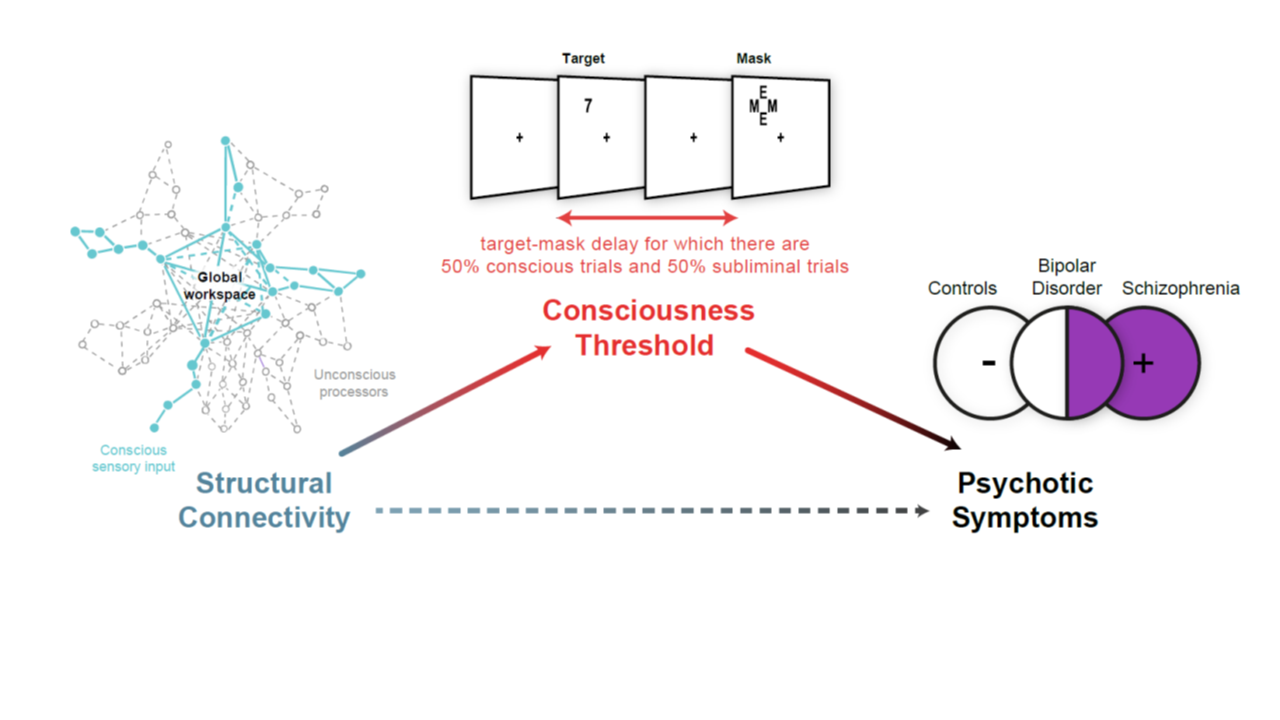According to a
theory of consciousness (global neural workspace theory), you only become
conscious of something if unconscious brain activity in sensory areas spreads to a larger network of neurons
throughout your brain via long-distance connectivity involving white matter.
People with schizophrenia and bipolar disorder have a deficit of conscious access and impaired long-distance connectivity. However, the relationship between these two deficits remains unclear. The aim of this study was
to determine the extent to which structural connectivity is correlated with the conscious perception threshold, particularly in patients with psychotic symptoms.
To do this, the researchers included healthy adults, patients with bipolar disorder with or without psychotic symptoms, and patients with schizophrenia in their study, and used two methods:
diffusion MRI tractography to study the structural connectivity of the brain, and a visual paradigm to estimate the threshold of visual conscious perception that corresponds to the minimum duration of presentation of a visual stimulus for it to reach consciousness - the shorter the stimulus, the better the conscious access.
The results obtained show that
patients with psychotic symptoms (schizophrenia and bipolar disorder with psychotic features)
have a higher threshold of conscious perception than controls and patients with bipolar disorder without psychotic features. For all participants, the lower the threshold, the better the long-distance white matter connectivity. These
results thus
confirm the global neural workspace theory that long-distance structural connectivity plays a crucial role in conscious access. In addition, the researchers show for the first time that
an alteration in brain connectivity is
correlated with psychotic symptoms through the elevation of the threshold of consciousness, thus providing anatomical correlates to the impairments observed in patients suffering from psychosis and
suggesting that the emergence of psychotic symptoms and the deterioration of conscious access could be closely related phenomena.

Contact at Joliot:
Josselin Houenou (josselin.houenou@inserm.fr)